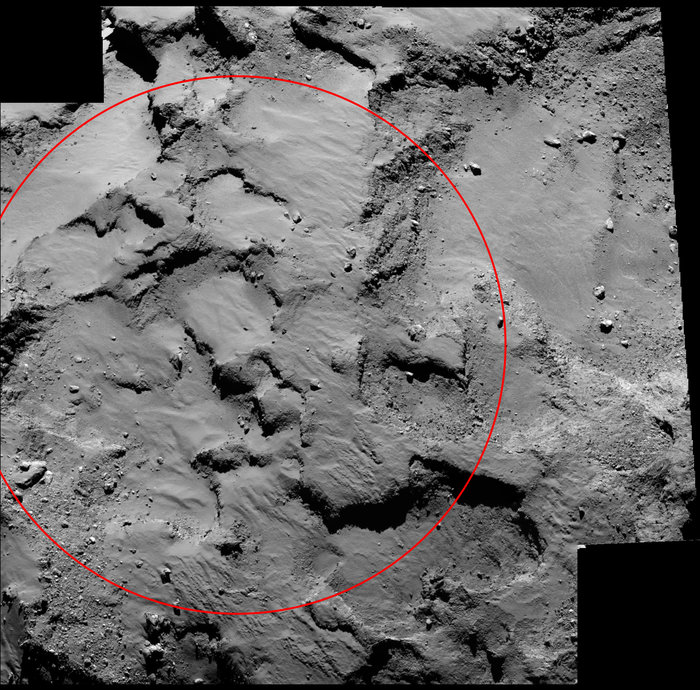
Site J it is! Philae will touchdown on the comet’s “head” on Nov. 12.
Following a thorough science, engineering, and hazard assessment of the merits of Site J, the European Space Agency (ESA) has given the green light for its Rosetta orbiter to deploy its Philae lander to the primary site on the “head” of Comet 67P/Churyumov–Gerasimenko as the location for the history’s first attempt to touchdown on a comet.
The primary landing site was confirmed following a comprehensive review meeting on Oct. 14 involving the orbiter and lander science and engineering teams and ESA management.
Site J is located on the smaller of the two “lobes” of the utterly bizarre comet and is shown in a high-res ESA mosaic above. The backup landing site was located on the “body” of the comet.
The two-image mosaic of Philae’s primary landing site was taken by the OSIRIS narrow-angle camera on Sept. 14, 2014, from a distance of 30 kilometers. The image is about 1 km across.
The Site J touchdown zone is circled and is approximately 500 meters in diameter.
“Now that we know where we are definitely aiming for, we are an important step closer to carrying out this exciting – but high-risk – operation,” says Fred Jansen, ESA’s Rosetta mission manager, in an ESA statement.
“However, there are still a number of key milestones to complete before we can give the final Go for landing.”
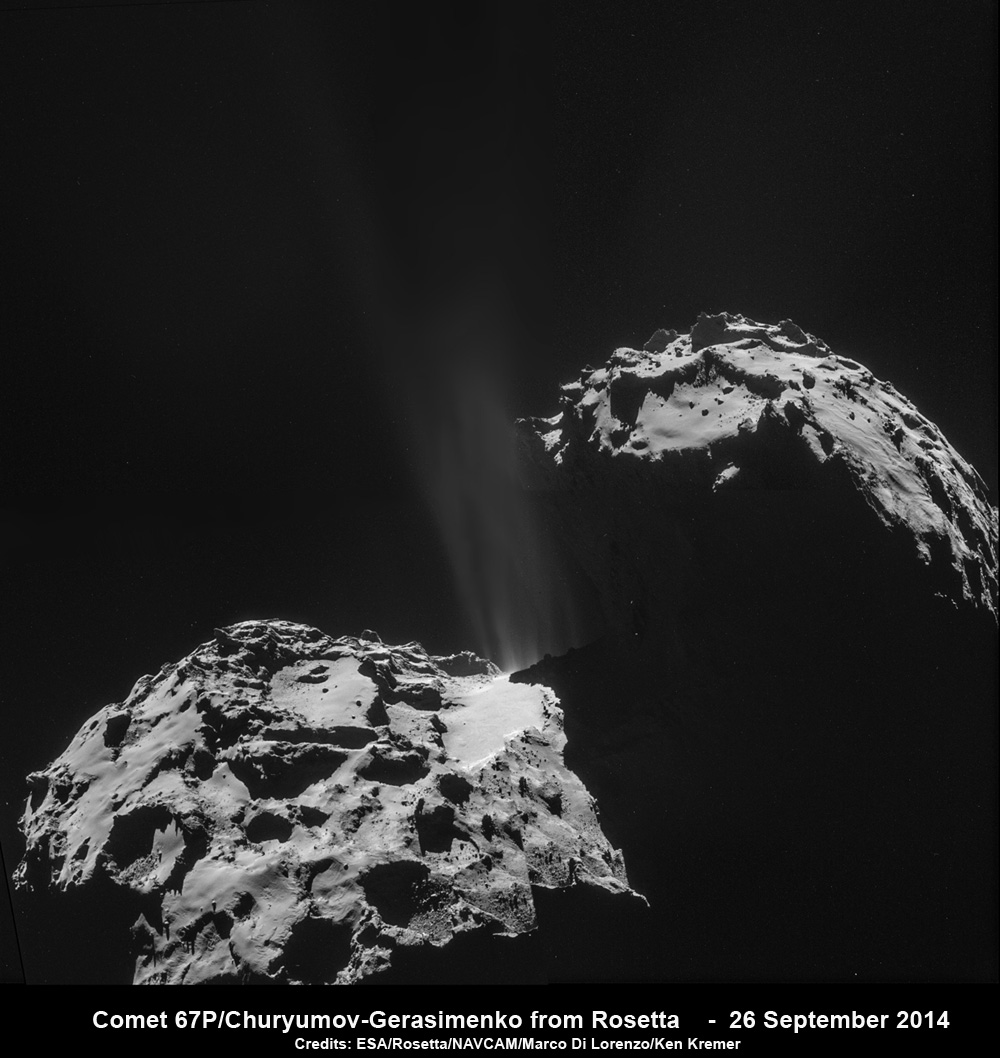
Since rendezvousing with the comet on Aug. 6, 2014, after a decade-long chase of over 6.4 billion kilometers (4 billion miles), a top-priority task for the science and engineering team leading Rosetta has been “Finding a landing strip” for the piggybacked Philae comet lander.
The team’s primary task has been utilizing Rosetta’s 11 science instruments to conduct an unprecedented scientific analysis of the comet to gather as much data as possible to maximize the chances of success for the Philae lander to safely soft land on comet 67P and study it for as long as possible.
Rosetta has also been spiralling down ever closer to the comet to increase the resolution of the images and spectral measurements, thus allowing for a more detailed look at the primary and backup landing sites, as well as a hazard assessment and boulder count.
The final two selected sites were whittled down from an initial “Top 5” list of candidates.
When Rosetta arrived in August it was travelling 100 km from the center of the 4-km-wide (2.5-mile) body. Now it is just 10 km from the center of comet 67P.
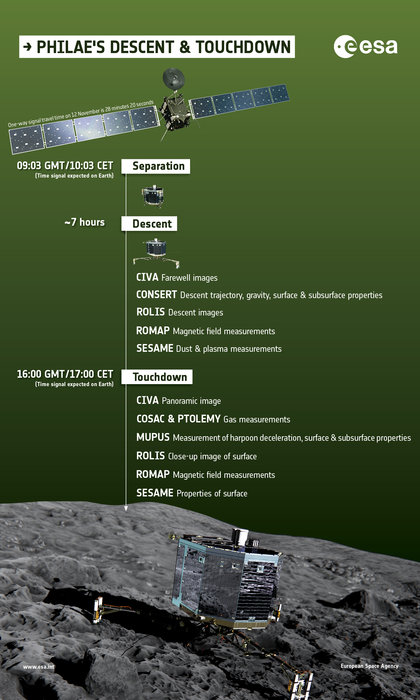
With the decision to “GO” for Site J, ESA also confirmed the timeline of events leading up to landing.
“Rosetta will release Philae at 08:35 GMT/09:35 CET on 12 November at a distance of approximately 22.5 km from the centre of the comet. Landing will be about seven hours later at around 15:30 GMT/16:30 CET.
“With a one-way signal travel time between Rosetta and Earth on 12 November of 28 minutes 20 seconds, that means that confirmation of separation will arrive on Earth ground stations at 09:03 GMT/10:03 CET and of touchdown at around 16:00 GMT/17:00 CET.”
The team will work through a series of Go/No-Go decisions on Nov. 11 and 12, including confirmation of trajectory calculations from the flight dynamics team and lander readiness, before giving the ultimate go-ahead for separation of Philae from Rosetta.
Rosetta must also carry out a brief thrusters maneuver to place Rosetta on the desired course for release of Philae, before the final “GO” command is given.
After deploying Philae, Rosetta must also reorient itself to establish a communications link with Philae.
“If any of the decisions result in a No-Go, then we will have to abort and revise the timeline accordingly for another attempt, making sure that Rosetta is in a safe position to try again,” says Fred Jansen.
During the seven-hour descent, Philae will begin its science operations by snapping images as well as sampling the dust, gas, and plasma environment close to the comet, says ESA. The probes will also take “farewell” photographs of each other. These images will be received back on Earth several hours after the momentous separation event.
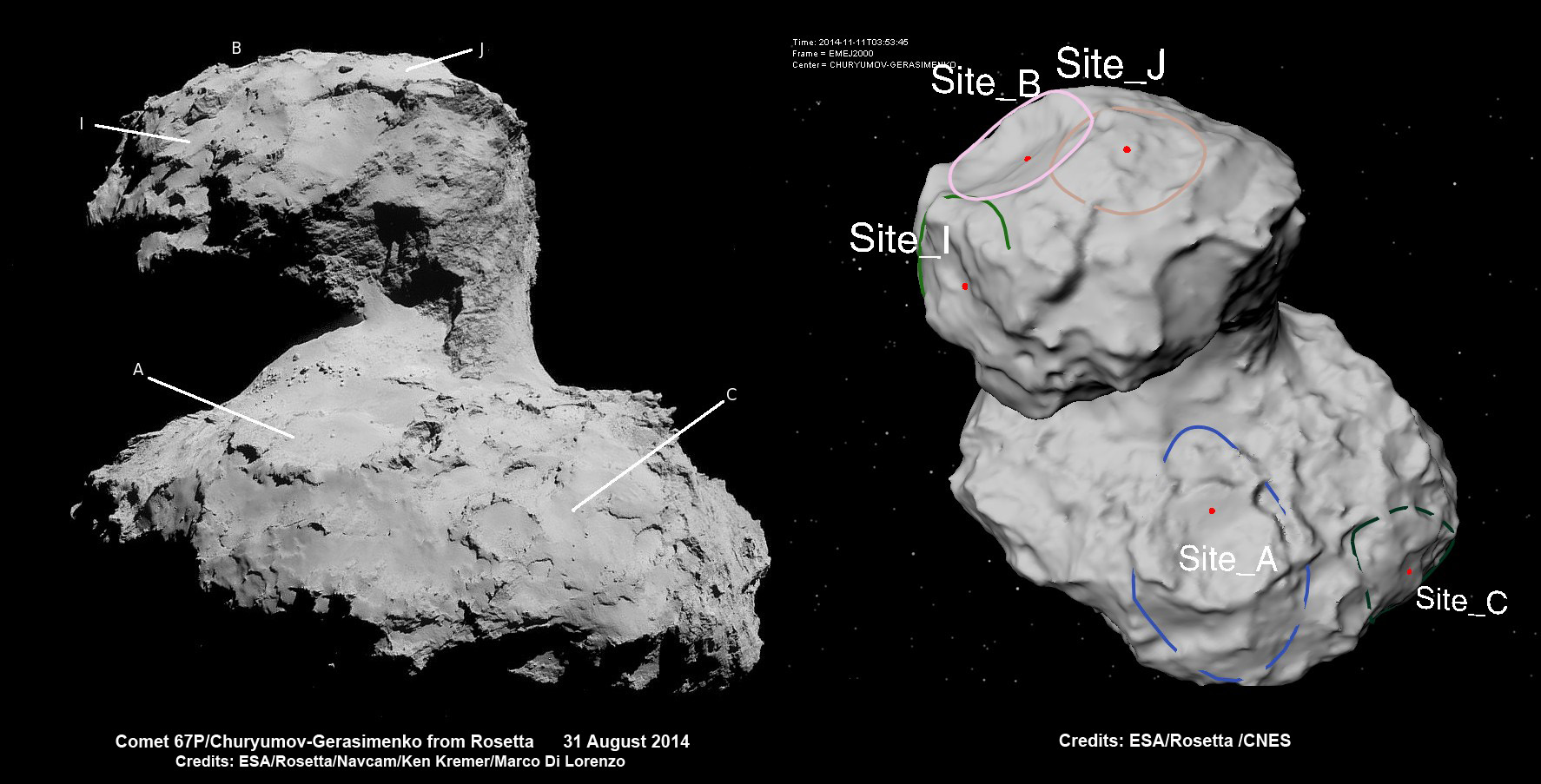
Philae’s landing will be entirely automatic. The 100-kg lander is equipped with 10 science instruments.
The three-legged lander will fire two harpoons and use ice screws to anchor itself to the 4-kilometer-wide (2.5-mile) comet’s surface. Philae will collect stereo and panoramic images and also drill 20 to 30 centimeters into the comet to sample its incredibly varied surface.
The Rosetta orbiter will continue studying the comet’s evolution until late 2015, if all goes well, as it escorts the comet and then arcs away on its outbound voyage past the Sun toward Jupiter.
Comets are leftover remnants from the formation of the Solar System. Scientists believe they delivered a vast quantity of water to Earth. They may have also seeded Earth with organic molecules—the building blocks of life as we know it.
Any finding of organic molecules will be a major discovery for Rosetta and ESA and inform us about the origin of life on Earth.
Stay tuned here for continuing developments.
Want to keep up-to-date with all things space? Be sure to “Like” AmericaSpace on Facebook and follow us on Twitter: @AmericaSpace
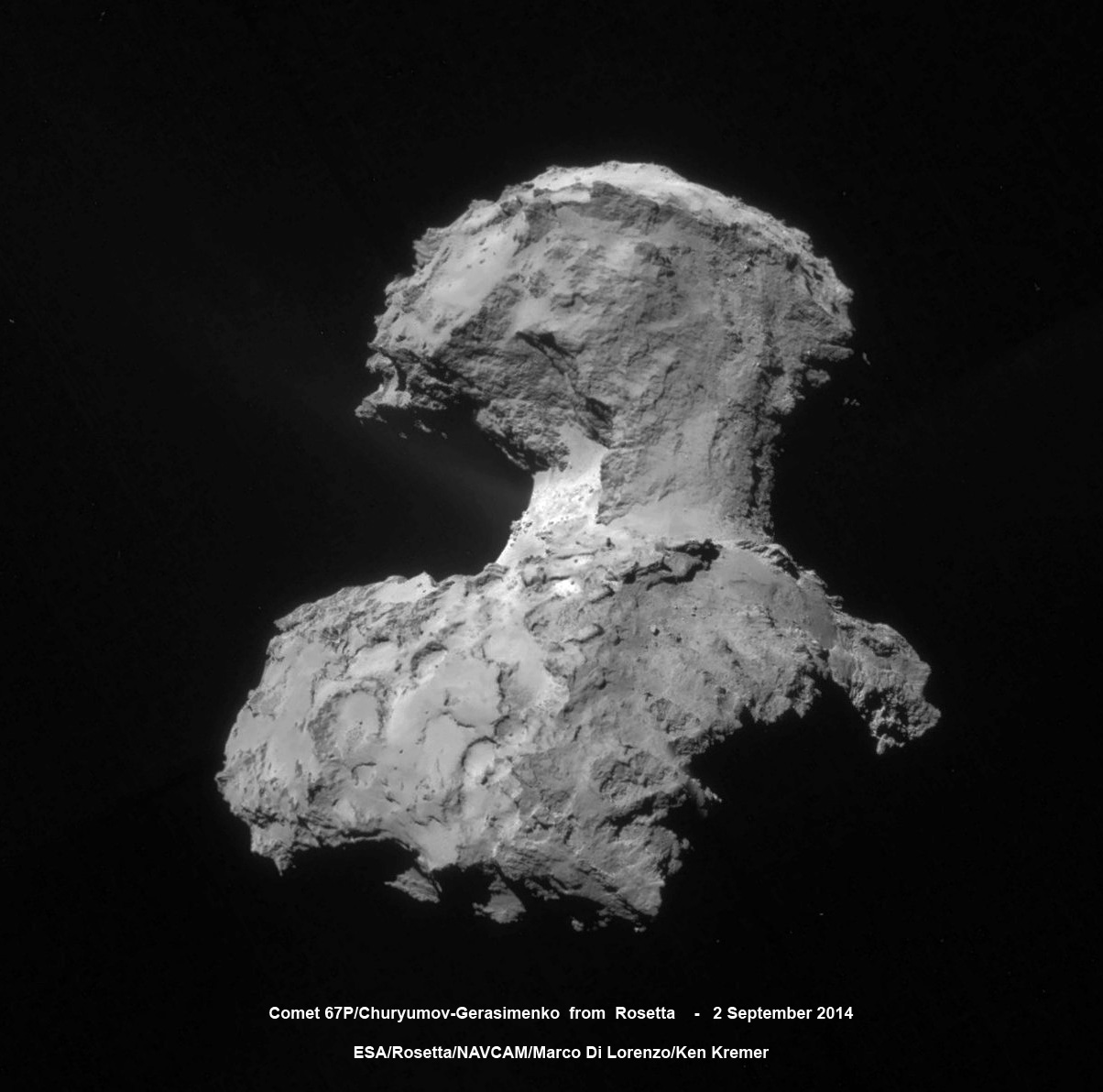
Credits: ESA/Rosetta/NAVCAM/Marco Di Lorenzo/Ken Kremer – kenkremer.com



